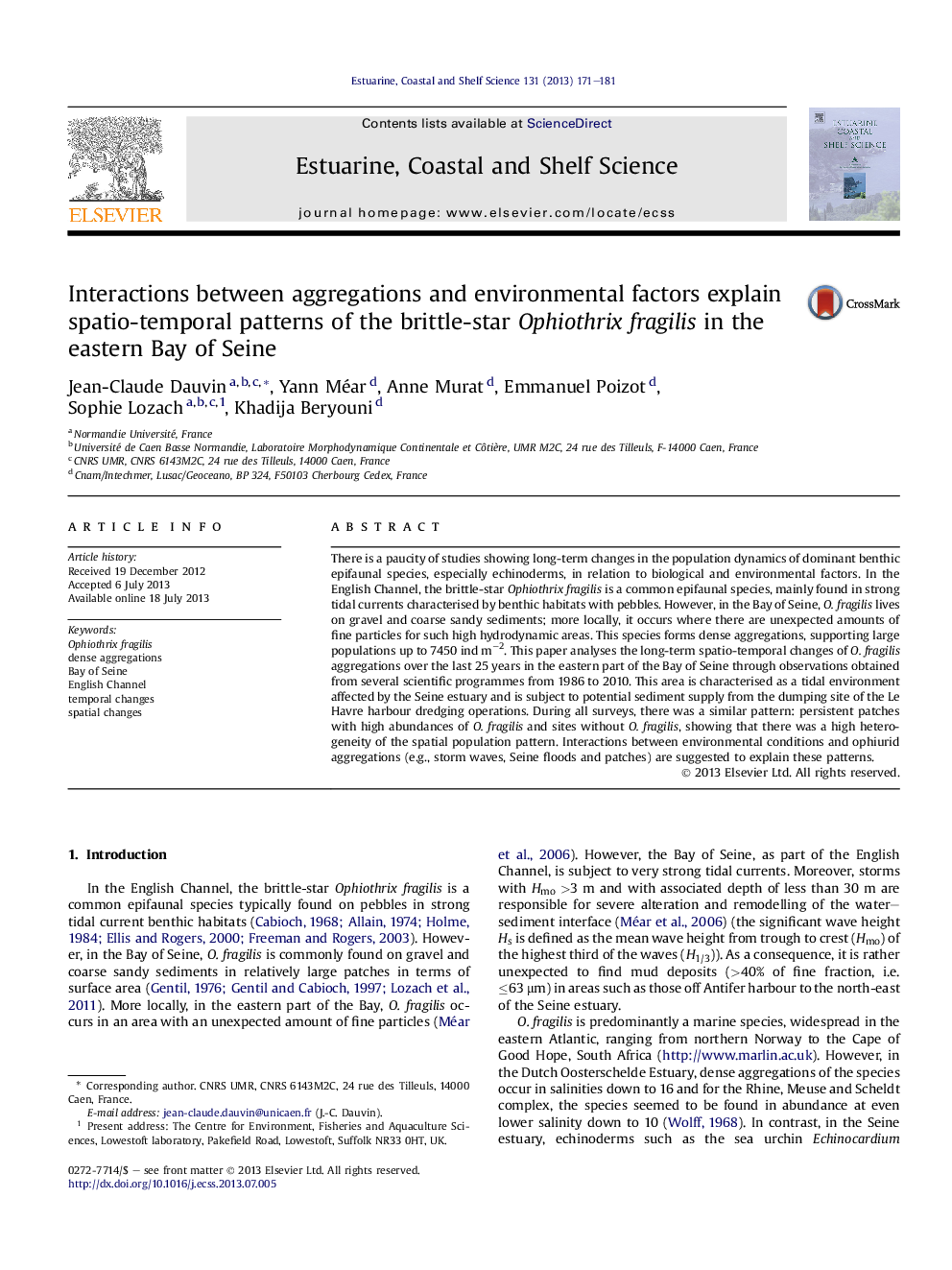| کد مقاله | کد نشریه | سال انتشار | مقاله انگلیسی | نسخه تمام متن |
|---|---|---|---|---|
| 6385082 | 1626665 | 2013 | 11 صفحه PDF | دانلود رایگان |

- This study shows the spatio-temporal patterns of the Ophiothrix fragilis in the Bay of Seine.
- We examine the abundance changes during 25 years.
- We observe the spatio-stability of abundance patches.
- Storm waves and Seine floods appear important to explain these patterns.
There is a paucity of studies showing long-term changes in the population dynamics of dominant benthic epifaunal species, especially echinoderms, in relation to biological and environmental factors. In the English Channel, the brittle-star Ophiothrix fragilis is a common epifaunal species, mainly found in strong tidal currents characterised by benthic habitats with pebbles. However, in the Bay of Seine, O. fragilis lives on gravel and coarse sandy sediments; more locally, it occurs where there are unexpected amounts of fine particles for such high hydrodynamic areas. This species forms dense aggregations, supporting large populations up to 7450 ind mâ2. This paper analyses the long-term spatio-temporal changes of O. fragilis aggregations over the last 25 years in the eastern part of the Bay of Seine through observations obtained from several scientific programmes from 1986 to 2010. This area is characterised as a tidal environment affected by the Seine estuary and is subject to potential sediment supply from the dumping site of the Le Havre harbour dredging operations. During all surveys, there was a similar pattern: persistent patches with high abundances of O. fragilis and sites without O. fragilis, showing that there was a high heterogeneity of the spatial population pattern. Interactions between environmental conditions and ophiurid aggregations (e.g., storm waves, Seine floods and patches) are suggested to explain these patterns.
Journal: Estuarine, Coastal and Shelf Science - Volume 131, 10 October 2013, Pages 171-181